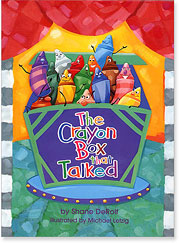This book depicts a society where everything is the same, where everyone follows the rules, and where everyone has no control over their lives or choices. There are no colors, emotions, or freedoms. Yet, everyone seems satisfied with the society in which they belong. Jonas, a 12-year-old boy, has been selected to be the new Receiver for the community. At first, he is completely startled and overwhelmed at the “award” and doesn’t know how he will benefit his community members. Once he begins his sharing sessions with the Giver, he is given the memories that the rest of his community does not have. Memories of pain, war, snow, and other joyous and hideous things fill his mind and a weight of knowing weighs Jonas down. It affects how he relates to his family and friends. He is not himself anymore and he cannot believe that no one else in the community lives their lives without this knowing too.
Jonas and the Giver divulge a plan for Jonas to escape the community and go Elsewhere. He takes with him Gabe, a young toddler that Jonas’ father brought home from the Nurturing Center. Jonas chose to bring Gabe because Gabe was going to be “released”, which Jones soon found out meant killed. He saved Gabe’s life and swept a plethora of memories across the community when he left since the memories are released if the Receiver no longer retains them. The book concludes with Jonas sitting atop a hill on a sled, Gabe on his back, much like the first memory that was passed to him from the Giver. He slides down the hill toward light and it is difficult to distinguish toward the notion of Jonas dying from the cold and hunger that consume him or finally reaching peace and serenity in a life he has chosen for himself.
This book is amazing for classrooms. I remember reading it in 6th grade and I cannot remember how I understood all of the information in the book. Maybe I just didn’t get some of the major points. It is incredible that this is considered a children’s book because I found some of the topic discussed mystifying and I cannot imagine what a younger student might think. So many themes are discussed thoroughly in The Giver, like power, choice, freedom, pain, sacrifice, memories, and diversity (or lack thereof). The elders in the community hold all the power: in the rules, the assignments that determine what people do for careers, the joys people are allowed to have. This infringes on the choices and freedom people take for granted, even until this day and in this country. There are places in the world where people cannot choose their actions, whom they marry, their religion, or what they say. The people of North Korea are only exposed to the media and information that the government seems fit- this is the society in The Giver that still exists today.
Jonas is chosen to be the only one to experience pain in the community and so he carries the burden alone. He can’t communicate the details of his work, so no one can even empathize with him. He is a young child who is overwhelmed with all these new feelings, sights, sounds, and ideas with no one there for him. He has to sacrifice his whole life- everything he has and everything he is turns into him being the Receiver. He doesn’t get to have relationships that he did before because 90% of his life is now hidden. The community is so homogeneous; there is no distinction between people besides the name that they are given. They live with cookie-cutter families in houses that are the same. They have the same routines with the same sharing of feelings, and they all follow the same paths in life. They know nothing of the people who came before them. Everyone in the community thinks their ancestors lived the same lives they currently live. However, Jonas learns that people had memory at one point in their lives. Their lives were not the same at all, they had diversity and color and fear and pain, which is something that is completely absent in his currently society. Only Jonas knows that the society they live in is not what anyone thinks it is. It is not how it always has been; it is some life sucked dry of anything too good and anything too horrible.
 |
| An illustration representing the first time Jonas saw color |
Here is a 15-day unit lesson plan on The Giver!





























